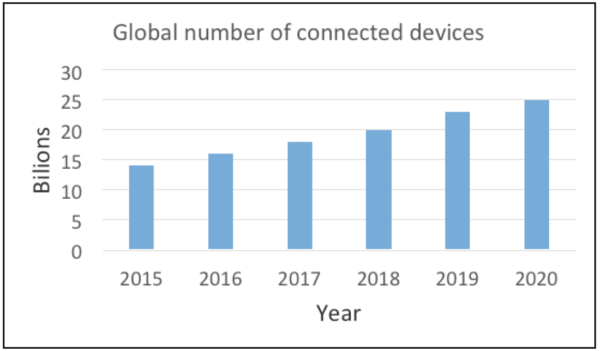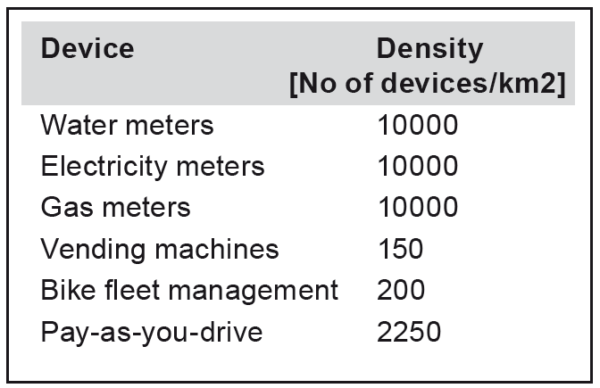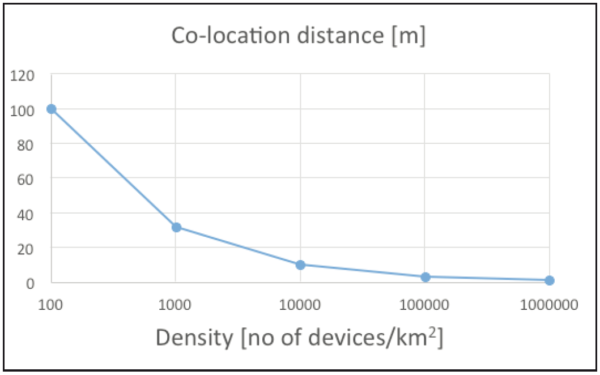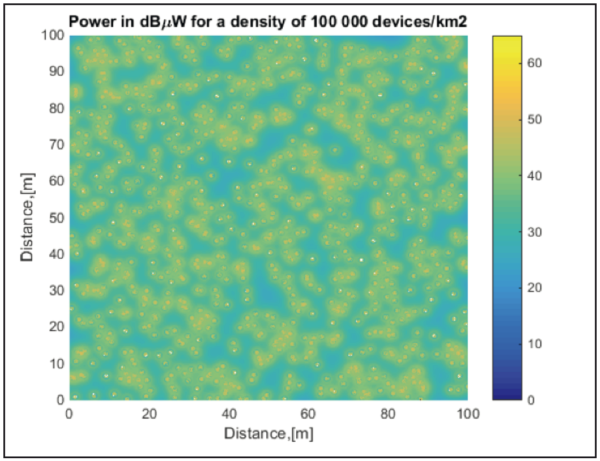The technical development . towards the full vision of the Internet of Things (IoT) will affect the area of Electromagnetic Compatibility (EMC) in a number of ways. IoT may even be the most challenging issue for the EMC area since it was born about 100 years ago.
The methodology in achieving EMC has to be further developed in order to handle the challenges that emerges as a result of the mass increase of wirelessly consumer devices, dense co-located and in scenarios characterized by being highly dynamic, flexible and non-predictable. In this paper, some of these new challenges are highlighted and discussed. The mass-increase of wirelessly products will make the unlicensed frequency bands occupied to a considerably larger extent than today. Another overall challenge is that IoT products will be operating at considerably higher frequencies than standard EMC testing is done for today. This will directly affect the methodology and equipment for both emission and immunity testing.
Introduction
The term Internet of things (IoT) refers to the internet-working of physical devices, vehicles, buildings and other items—embedded with electronics, software, sensors, actuators, and network connectivity that enable these objects to collect and exchange data. Kevin Ashton, one of the founders of the original Auto-ID Center, is usually considered as the first to use ”Internet of Things” in a wider sense in 1999.
The overall goal of Electromagnetic Compatibility (EMC) is the correct operation of different equipment in a common electromagnetic environment. The general approach to achieve this goal is today typically solved by a pure technical engineering approach where standards, regulations and proven design criteria play a fundamental role. This approach may in most cases achieve EMC, at least for static cases and scenarios that do not change significantly over time.
However, the more unpredictable scenarios we have, the more difficulties this static approach will experience. The current development towards IoT, where a massive increase of wireless technology via the wireless 5G development is foreseen, is expected to pave the way for the so called Networked Society. The 5G vision could be seen as the necessary technical enabler to really make IoT happen at full scale. 5G is being designed as the key enabler of the future digital world, where ubiquitous ultra-high broadband infrastructure will support the transformation of processes in all economic sectors and meet the growing consumer market demand. The wireless part of global Internet traffic is expected to grow from approximately 50% today, to about 75% in 2020, and the first 5G products are expected to be available in 2020.
Mass-Increase of Devices
This development within IoT will highlight several new challenges for EMC. The vision of the IoT involves, in principle, all sectors of society. Examples are smart cities, e-health, smart homes, smart grids, smart agriculture, intelligent transport systems (ITS), logistics, industrial control, environmental monitoring, education, entertainment and media. Forecasts of the growth of the number of connected devices are done continuously by different actors.
A few years ago, forecasts were in the order 50 billion devices 2020, but those forecasts have now been considered as too optimistic [1]. Fig. 1 shows a typical example of current forecasts. The largest growth in Fig. 1 is due to IoT-applications, whereas the growth of PC/laptop/tablets and mobile phones is typically estimated only to a few percent from 2016 to 2020.
Fig. 1: Typical forecast of the total number of connected devices in the world.
This development will create a complexity of co-location scenarios that has never been seen before. New electronic devices, both non-wireless and wireless will be co-located almost everywhere in the society and these scenarios will be highly random and dynamic, strongly affected by the habits of the consumers. Predictions of the number co-located devices per area unit says up to 10000/km2 for massive IoT connected devices in dense smart cities [2], see Table 1.
Table 1: Estimated [2] density of devices for massive IoT connected devices in smart cities.
From an EMC point of view, this density of devices corresponds to certain co-location distances between devices. A simple way of relating co-location distances with co-location densities is by assuming the devices to be to be uniformly distributed in geographic position. Then the average corresponding co-location distance between devices can be determined, se Fig. 2.
Examples of such applications are water meters, electricity meters and gas meters. Adding other devices for smart homes and entertainment, the density of the total number of devices may increase in the order of a factor 10-20 to about 200 000 devices/km2[4], resulting in very complex co-location scenarios for EMC.
Figure 2: Co-location distances related to co-location density for uniformly positioned devices.
Co-location distances between wireless receivers and electronics fulfilling different standard radiated emission limits have been determined in several publications, e.g.[5]. The minimum co-location distance to avoid a large risk for interference problems is highly dependent on the assumptions on e.g. interference waveform, signal-to-noise ratio for the wireless receiver and the emission standard considered.
However, results from such analyses vary between a few meters up to hundreds of meters. Thus, a rough analysis shows that the range of such minimum co-location distances fall in the interval of expected co-location densities of connected devices in IoT scenarios. This indicates that the predicted larger co-location densities will be challenging from an EMC point of view.
If we assume a density of 100 000 devices per square kilometer, which may be appropriate to model crowded areas, such as in-house or in business centers, the received power may vary as depicted in Fig. 3. The figure shows the received interference power in dBµW over an area of 100 m x 100 m. The devices are assumed to use the ISM (industrial, scientific and medical) frequency 868 MHz with a transmit power of 25 mW and are randomly distributed over the area.
Since the devices are intended to have a communication distance of at least ten meters, a density of 10 000 devices or higher will introduce an increase of the background-noise level up to 65 dBμW. Systems in this frequency band typically use a channel bandwidth of 25 kHz. Assuming a noise figure of 15 dB, the thermal noise level to -144 dBμW/Hz, adjusting for the 25 kHz bandwidth corresponding to 44 dB, the receiver noise level in such a system to be about
-144+15+44 = -85 dBμW (in a 25 kHz bandwidth)
Thus, the resulting interference power may exceed the receiver noise level by up to 65-(-85) = 80 dB for the worst cases and will of course cause severe interference problems. Thus, for this scenario even the lower interference levels (20-30 dBμW) in Fig. 3 will cause unneglectable interference problems.
Figure 3: Received power in a square of 100 m x 100 m, when the transmitter power is 25 mW at 868 MHz and the device density is 100 000 per km2.
Considerably Higher Frequencies
IoT devices are planned to be used for considerably higher frequencies than standard EMC emission and immunity testing are performed for today. The most far reaching visions involve radio coverage in outdoor environments for frequencies up to about 30 GHz and indoors up to about 90 GHz. This will of course affect the abilities to achieve EMC both regarding immunity and radiated susceptibility.
Present EMC standard covers, with some special exceptions, radiated and susceptibility testing up to 18 GHz. Thus, for a wide range of new frequencies, both emission and immunity properties will be unknown. Furthermore, instruments and equipment for EMC testing will have to be further developed and modified to cope with the large extension of frequency bands.
Unlicensed Versus Licensed Frequency Bands
Licensed frequency bands, means that individual companies (e.g. telecommunication operators) pay a licensing fee for the exclusive right to transmit on assigned channels within that band in a given geographic area. Licensing is therefore a way of ensuring that wireless operators do not interfere with each other’s transmissions. Unlicensed frequency bands do not require any permission to use. The only requirement is to meet some rules associated with the particular frequency band.
Typically, the maximum transmission power is regulated. One example of unlicensed frequency bands are the ISM-bands. ISM-bands are reserved internationally for the use of radio frequency (RF) energy for industrial, scientific and medical purposes other than e.g. mobile telecommunications. Examples of applications in these bands include radio-frequency process heating, microwave ovens, and medical diathermy machines but also e.g. Wi Fi applications, Bluetooth, ZigBee, wireless car keys, alarm systems and remote controls for a variety of products.
The unlicensed bands are always a challenge from an EMC point of view, especially for applications and services with requirements on availability and non-disruptiveness. Since the unlicensed bands are open for anyone who complies with the rules, the electromagnetic environment can vary considerably between different geographical areas. In urban-, industrial- and other locally crowded areas, these bands tend to be very crowded with radio signals, causing different kinds of interference problems such as disruption or time delays of transmitted data. With the mass increase of IoT devices, unlicensed frequency bands will be even more crowded since these bands offer quick time for implementation and due to that hardware for such bands are cheap and fast to procure.
Short Range- versus- Wide Area Networks
The design of wireless networks for IoT applications involves management of trade-offs between several conflicting requirements. Such requirements may be wireless range, network connectivity, energy consumption, battery life, bandwidth, frequency band, hardware cost, operational cost and maintenance cost.
It is likely to assume that low-power, short-range networks will dominate wireless IoT connectivity through 2025 [3]. Several solutions will probably co-exist and it is likely that no single emerging technology will dominate. The requirements of future IoT networks are therefore predicted to contain large geographic coverage (nation wide), battery life up to 10 years, data rates of hundreds to tens of kilobits per second (kbps). The hardware cost should be about $5 per device [3].
The low-power wide-area networks (LPWAN) will probably move from proprietary technologies to standardized narrowband (NB) technologies, so called NB-IoT [3]. From an EMC point of view, low power devices co-located with a high density will be challenging for two reasons. Firstly, a high density of number of devices per area unit will give a higher level of the total electromagnetic interference environment. Secondly, low-power devices will have a lower signal-to-noise ratio (SNR) for the wireless connections. This means larger sensitivity to electromagnetic interference.
Need for New Interference Models
The challenge to achieve EMC in such an unpredictable environment as IoT will create will require new ways of thinking and planning in addition to traditional regulations and technical engineering. For example, modeling of electromagnetic environment produces by such devices may require the use of statistical description of a distributed electromagnetic interference density in some way, e.g. electric field strength per area unit. The future signal environment as a result of devices related to IoT could be assumed to be constituted by a sum of several interfering signals. Furthermore, it may be assumed that the signals, at least approximately, will be dominated as one type of waveform, but with variations in the individual waveforms taken care of by appropriate statistical modelling.
Conclusion
The technical development towards the full vision of the Internet of Things (IoT) may be the most challenging issue for the EMC area since it was born about 100 years ago. In summary, the following challenges may be the largest for the EMC area:
- The mass increase of low-power wireless networks means larger vulnerability to electromagnetic interference and higher interference levels due to larger concentration of co-located devices.
- The considerable extension of frequency regions up to several tenths of GHz for IoT applications requires further development of methodology and equipment for standard EMC emission- and immunity testing.
- The mass-increase of wirelessly products will make the unlicensed frequency bands occupied to a considerably larger extent than today.
- The co-location scenarios will be characterized by being highly dynamic, flexible and non-predictable. Therefore consumer habits will to a larger extent have impact on the possibility of achieving EMC.
References
[1] Amy Nordrum, “Popular Internet of Things Forecast of 50 Billion Devices by 2020 Is Outdated”, IEEE Spectrum, Aug 2016
[2] “Ericsson Mobility Report”, November 2016.
[3] “Gartner Identifies the Top 10 Internet of Things Technologies for 2017 and 2018”, Press release STAMFORD, Conn., February 23, 2016.
[4] Ericsson Technology Review, Vol. 93, no. 3, 2016.
[5] P Stenumgaard, K Fors, K Wiklundh, ”Interference Impact on LTE from Radiated Emission Limits”, Proceedings of IEEE EMC 2015, Dresden, Germany.






